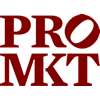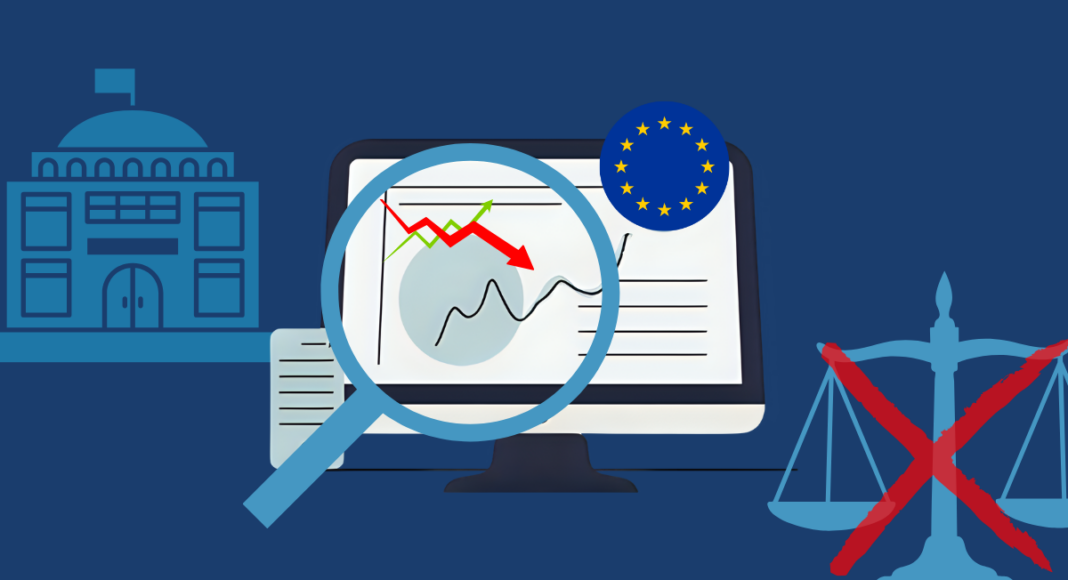The European Commission has struggled to tackle excessive prices in Europe, despite evidence of how they arise in relation to market power. Aline Blankertz, Todd Davies, Justine Haekens, and Nicholas Shaxson argue that adopting accounting and financial analysis as part of its toolkit can enable the Commission to understand and act when firms are exploiting their market power.
It is remarkable that the European authorities tasked with enforcing competition law have almost never tried to establish whether companies’ market power produces excessive prices.
Since 2000, the European Commission has decided only a handful of excessive-pricing cases—we count ten using the Commission’s own database and filtering for “excessive” or “unfair” prices—and only once conclusively found that a company charged excessive prices. In that case, Deutsche Post was fined a “symbolic” 1,000 euros back in 2001, while in two other cases—Standard & Poor’s in 2011, and Aspen in 2017—the Commission accepted legally binding commitments to cut their prices. Most complaints, however, were rejected by the Commission.
This is odd in an era of widespread worries about inflation and amid compelling new research in recent years by the International Monetary Fund, the European Commission, and others on the links between rising market power, price levels and inflation. Part of this inertia is due to the competition communities’ exclusive reliance on a branch of economics called industrial organization (IO) that struggles for several reasons to identify excessive profits. Part of this inertia is also due to the Commission’s failure to define and look for evidence of exploitation.
The good news is that there are no good legal or technical reasons for this myopia, and this inaction can be rapidly overcome. A range of tried-and-tested tools based in accounting and financial analysis (AFA), which actual firms and investors use to identify profitability, exist to evaluate when prices are excessive. This year, the Commission appears to be taking welcome, if tentative, steps in this direction.
Excess prices, evident everywhere
The Covid-19 pandemic and its inflationary surge made the links between inflation, prices, profits, and market power apparent not just to researchers, but to broader audiences. Isabella Weber and Evan Wasner published widely cited research into “sellers’ inflation” deriving from “the ability of firms with market power to hike prices.” Non-experts can and do easily grasp the links between corporate profitability, market power and excess prices. Collins English Dictionary even shortlisted as its 2023 word of the year “greedflation,” defined as “the use of inflation as an excuse to raise prices to artificially high levels in order to increase corporate profits.” (The word was edged out from the top spot by “AI.”)
As firms’ rising ability to levy excess prices drives a growing wedge between people’s earnings and the costs of things they buy, this feeds inequality and stokes public anger.
Why has the Commission shied away from “seeing” excess prices?
The increasing urgency of tackling excess prices raises the question of why the Commission has brought so few cases related to excessive pricing.
The obstacles are not legal. For instance, Article 102(a) in the Treaty on the Functioning of the European Union prohibits enterprises with economic power from “directly or indirectly imposing unfair purchase or selling prices or other trading conditions.”
We suggest two fundamental reasons for the apparent inaction.
First, competition authorities have historically examined prices through the lens of industrial organization (IO) economics, where prices are determined by the interplay of supply and demand. In a monopoly situation of one supplier, IO economics conceptualizes the equilibrium price at the intersection between the monopolist’s offer and market demand. This framework equates the price observed in the market—the equilibrium price — with what is fair. So IO is ill-equipped to “see” high prices derived from market power as excessive.
More generally, IO economics involves often complex, stylized models based on a broad range of admissible assumptions about the shape of curves on graphs intended to represent, for instance, cost or demand. However, these assumptions operate in sanitized scenarios that do not resemble how firms and markets actually operate.
To illustrate this, a short paper designed as a practitioners’ guide to the United States 2010 Horizontal Merger Guidelines describes a range of assumptions the U.S. antitrust authorities use, including that non-merging firms do not adjust their prices or reposition their products in response to an industry merger. Assuming away such business responses might be fine in academic settings, but in the real world firms frequently do adjust.
IO also leans heavily on the theoretical concept of “marginal cost”—the cost of producing one additional unit. The market is supposedly in competitive equilibrium if the marginal cost is close to the market price. Yet marginal cost calculations rely on unverifiable assumptions, and companies do not provide data on, analyze, or use this concept.
Companies can also be selective on the data they provide or generate. They also hire IO economics consultancies (such as Charles River Associates, RBB or Compass Lexecon) which, in the context of a lack of public regulation of how they interpret or present the relevant information, have wide leeway to, as one expert put it, “spend hours torturing data and massaging margins down to get the desired result.” The subsequent analyses are generally impenetrable to those outside a narrow circle of IO-trained experts, including many judges.
Regulators have been speaking out about this. Economic consultancies have been accused of “spamming the regulator” with lengthy and complex submissions containing arguments and theoretical assumptions to overwhelm authorities’ capacity to intervene on matters—such as excessive pricing. Sarah Cardell, the chief executive of the United Kingdom’s Competition and Markets Authority (CMA,) in 2024 issued a “health warning” about “spurious and insufficiently evidenced efficiencies.”
The issue is the same in the U.S. Former Federal Trade Commission Chair Lina Khan and 13 state attorneys general decried in January an “arm’s race” pitting companies and economics consultancies “that routinely work to weaken antitrust enforcement” by submitting large volumes of “shoddy expert testimony . . . wholly lacking in rigor or credibility,” against regulators forced to spend “exorbitant” amounts rebutting it. Expert fees can cost $25 million for a single case, which large conglomerates can afford but underfunded and understaffed government regulators cannot.
The dominance of IO and its theoretical and practical flaws go hand in hand with a second reason for the European Commission’s apparent reluctance. Although Article 102 authorizes the Commission to intervene on excessive pricing, in practice the Commission has historically focused on “exclusionary” abuses—how firms block rivals’ ability to compete and otherwise interfere with competitive processes—for which extensive guidelines exist. However, no guidelines exist for “exploitative” abuses, which require judging market outcomes and are about more concrete and direct misuses of economic power (such as charging excessive prices).
The Commission’s preference is perhaps in line with a long-standing assumption that exploitative abuse is only possible after anticompetitive exclusion has occurred. However, experts note that the Commission’s lack of focus on exploitative abuses is “bizarre” from more than one perspective:
Not only are three quarters of the examples of abuses given in Art. 102 itself exploitative, but exploitative abuses fit more easily with our innate sense of what is “fair” and what an “abuse” of power really is . . . [C]harging exorbitant prices for a product, or paying a supplier so little that they can’t feed a family, is something which many in the competition law bubble have difficulty seeing as an ”abuse.”
The dominance of IO economics, and the general neglect of exploitative abuses under Article 102, help explain why excess prices have largely fallen off the Commission’s radar, leaving its decisional practice and case law underdeveloped in this area.
How to fill the gaps
The good news is that there is a potent, tried-and-tested alternative or complement to IO, which is well equipped to (among other things) establish the existence of excess prices: accounting and financial analysis. This is the familiar world of company annual reports, income statements, and balance sheets.
In contrast to the practice of IO, AFA relies on troves of data that is legally mandated, standardized, audited, and subject to extensive public regulation. The reporting principles that underlie accounting figures are discussed and agreed in international fora and imported into national and international standards such as the International Financial Reporting Standards or U.S. Generally Accepted Accounting Principles. Also, in contrast to IO, it is used by all listed companies and their analysts to measure their business performance.
A key way in which AFA can be used to identify excessive pricing starts by looking at profitability, as reported to shareholders. In accounting terms and in the real world, prices and profits are closely linked: the more that companies are able to raise their prices above their costs, the more they can generate (potentially excessive) profits above their cost of capital. Over time this balloons into substantial market capitalizations.
AFA allows for a range of market-based benchmarks against which comparisons can be made to identify excess profits, prices and company valuations. For example, comparisons can be made across companies and industries to identify when companies continuously enjoy profit rates above their peers despite similar risk profiles.
Alternatively, AFA can home in on when firms remunerate their investors at rates significantly higher than comparable firms. Standard methods exist to establish such benchmarks and comparisons. Investors welcome market power that drives excessive prices, profits and higher share prices: Bloomberg even introduced a Pricing Power Index to track this.
AFA also, by bringing in markets as a source of reference points, allows problems to be identified at different levels. For example, many or most of the outputs of digital firms such as Meta are zero-priced and thus not easily amenable to price analysis (nor do marginal costs make sense.) Yet, it is straightforward to analyze the profitability of Meta or of its business segments. Profitability analysis can thus point to broader categories of exploitation beyond excess prices.
Another entry point is market capitalization, which corresponds to the sum of expected future earnings or profits, after risk-adjusted discount rates are applied. This provides market-based expectations for future profitability, which can be useful, for example, in analyzing high-potential startups that are not yet making profits. AFA is rooted in hard investor expectations and real money that people are prepared to hand over, as opposed to IO’s price-theoretic constructs, assumption-laden models, and often reverse-engineered data inputs.
Other benchmarks and comparisons are useful, too. For example, price comparisons may be made over time, adjusting for any cyclical or secular trends. The CMA last year fined pharmaceutical firms Pfizer and Flynn 69 million pounds after it found drug price rises of over 2,300% from 2012 onwards. Alternatively, prices could be benchmarked relative to prices found in markets in different geographical areas where levels of competition may be greater. This happened in the 2003 Gazprom case, where the Commission found long term contract prices for gas—an exchange-traded commodity with transparent prices—in some European countries had been “significantly and persistently” above those found elsewhere.
So far, the CMA has been more willing than the Commission to use AFA in investigating excess prices and profits. For example, it found major excess profits (what it calls “economic profit margins”) in a 2024 study on children’s social care, exposing exploitation of vulnerable people and health budgets by private equity and other large firms.
Yet, the Commission has occasionally used AFA. It used profitability analysis and AFA in the Aspen case in 2017 on excessive pricing in cancer drugs. Aspen was found to have “exceeded its relevant costs by almost three hundred percent on average.” The remedy, too, had major positive impacts on vulnerable people and on public health budgets.
Last July, the Commission announced an investigation into Abu Dhabi National Oil Company’s (ADNOC) proposed acquisition of the German chemicals producer Covestro, flagging concerns that it might violate the Foreign Subsidies Regulation (FSR), which addresses how foreign subsidies distort competition in the EU. The Commission found that:
[F]oreign subsidies may have enabled ADNOC to acquire Covestro at a valuation and financial terms that would not be in line with market conditions, and which could not have been matched by unsubsidised investors[…] ADNOC may have offered an unusually high price [for Covestro] and other favourable conditions, which may have deterred other investors from making an offer.
While this proposed merger is about the price of companies, rather than that of products like Aspen’s cancer drugs, this explanation reflects a scrutiny grounded in financial analysis, as seen from its focus on “valuation,” “unusually high prices” and comparisons of investor returns. The case again reflects the feasibility and usefulness of AFA. The Commission expects to reach a decision on ADNOC/Covestro by December 2.
Rooting competition analysis in hard business realities rather than in malleable economic models can open enforcers’ eyes and empower them. It is perhaps unsurprising that the U.K., with its large City of London financial center, should regularly use its deep pools of AFA expertise. However, there is no shortage of this expertise in the EU. It is high time for the Commission to expand AFA’s use in excessive pricing cases and beyond to confront market power and exploitation, and abuse in the real world.
Authors’ Disclosures: Aline Blankertz is employed by Rebalance Now, a non-profit organization working against monopoly power and funded by Schöpflin Stiftung and Stiftung Mercator, two philanthropic donors. Todd Davies, Justine Haekens, and Nicholas Shaxson report no potential conflicts of interest. You can read our disclosure policy here.
Articles represent the opinions of their writers, not necessarily those of the University of Chicago, the Booth School of Business, or its faculty.
Subscribe here for ProMarket’s weekly newsletter, Special Interest, to stay up to date on ProMarket’s coverage of the political economy and other content from the Stigler Center.







